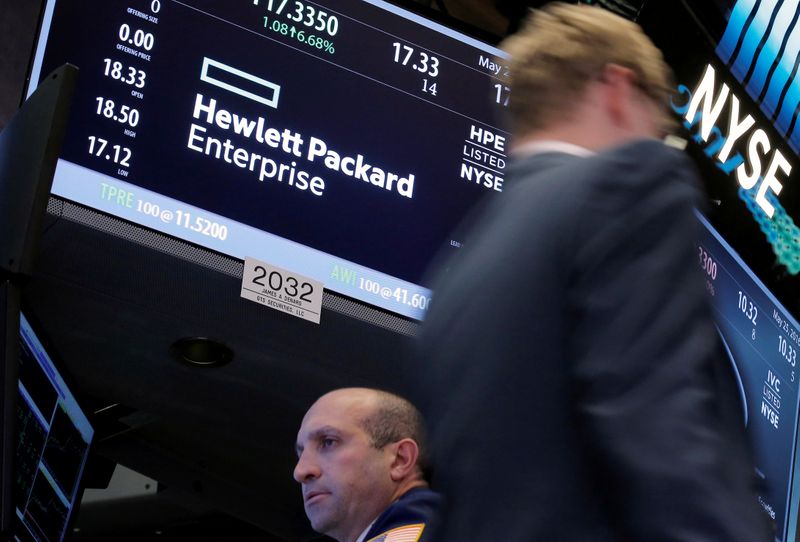SoFi shares rise as record revenue, member growth drive strong Q3 results
Investing.com -- Deutsche Bank analysts on Tuesday initiated research coverage of Hewlett Packard Enterprise (NYSE:HPE) with a Hold rating and a $22 price target.
Despite several potential upsides, the bank’s analysts have concerns about the company's near-term execution risks, especially as it moves forward with the $14 billion Juniper acquisition, the largest in HPE's history.
DB highlights that HPE's shares currently trade at a discounted valuation compared to peers, offering possible upside. Shares are valued at under 6x 2025 estimated EBITDA and less than 10x 2025 earnings, below the broader Hardware/Networking peer group.
“Relative to its own historical valuation ranges, current valuation also appears less stretched,” analysts said in a note.
HPE’s high-single-digit EPS growth outlook makes this discount stand out further.
One potential growth avenue for HPE is its AI segment. The company’s AI systems revenue has been accelerating, representing over 17% of the last quarter’s revenue, driven by strong demand for its high-performance computing systems.
“As investment and uptake proliferates beyond larger cloud/model builders towards sovereigns and enterprise, we believe HPE is well positioned as an incremental beneficiary,” analysts wrote.
Moreover, the company stands to benefit from a recovery in its Networking segment, Deutsche Bank notes, especially after recent inventory normalization.
The firm estimates that Networking could account for over a quarter of HPE’s revenue and nearly half of its operating profit once the Juniper deal is integrated. However, DB cautions that a “sizable near-term integration risk” remains for HPE.
“We see elevated customer churn risk (from both HPE's existing Intelligent Edge business, as well as within Juniper's base), given the near-term uncertainty around future product road maps that both customer sets face,” analysts continued.
While DB acknowledges the deal is accretive on paper, the pro forma leverage is expected to remain in the mid-to-upper 2x range, limiting opportunities for increased shareholder returns in the near term.
